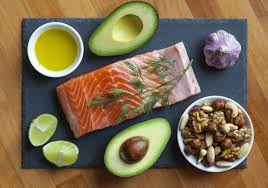The Ketogenic Diet
By: Dr. Keith Kantor

The “keto diet” has gained mainstream popularity in the past few years due to its high success rate and unlike many fad diets that come and go with very limited rates of long-term success, the ketogenic (keto) works. It has always been popular among the bodybuilding community for its ability to shed body fat quickly while maintaining optimal amounts of lean muscle. The keto diet has been practiced for more than nine decades (since the 1920s) and is based upon a solid understanding of physiology and nutrition science.
The keto diet works for such a high percentage of people because it targets several key, underlying causes of weight gain including hormonal imbalances, especially insulin resistance coupled with high blood sugars especially in those who have type 2 diabetes or hypoglycemia. The common cycle of restricting and “binging” on empty calories due to hunger that so many dieters struggle with is not common with those who adopt the keto lifestyle and the healthy whole foods that are on it’s food list.

Rather than counting calories, small portion sizes, and excessive exercise, which require unrealistic will power (especially when your energy levels are low due to restriction), the ketogenic diet takes an entirely different approach to weight loss and health improvements. It works because it changes the “fuel source” that the body uses to stay energized. The body goes from burning glucose (or sugar) to dietary fat and fat stores within the body. Combining the keto diet with intermittent fasting can provide long-term results without the starvation or suffering.
The diet was originally designed in the 1920’s to help control seizures of those who had epilepsy. Keto is short for ketosis, this is when the body is using ketones in the blood for energy rather then glucose from foods that contain carbohydrates. Ketosis can only occur when fat is the primary macronutrient consumed to meet daily calorie needs.
The keto diet does not require any calorie counting; the restriction is virtually eliminating all foods that contain sugar and starch (carbohydrates). These carbohydrate dense foods are broken down into sugar (disrupting insulin and glucose) in our blood once we eat them, and if these levels become too high, extra calories are much more easily stored as body fat and results in unwanted weight gain. However, when glucose levels are cut off due to low-carb dieting, the body starts to burn fat instead and produces ketones that can be measured in the blood.
Rather than drawing energy from glucose, a person in ketosis stays fueled off of these circulating ketones or ketone bodies — essentially, burning fat for fuel. This is the principal goal of the ketogenic diet, which can be achieved by adhering to the macronutrient targets.
The keto diet is low carbohydrate, high fat and moderate protein.
Macronutrient percent ranges:
70-80% fat
5-10% carbohydrates
15-20% protein

Like any nutrition plan the quality of food can impact the success rate. Aim to consume all high quality organic, free range, etc. meats, seafood, poultry, vegetables and fruits.
Fat food sources include: olive oil, coconut oil, grass-fed butter, palm oil, and some nuts and seeds. Fats are a critical part of every ketogenic recipe because fat is what provides energy and prevents hunger, weakness and fatigue. If your fat intake is not high enough the diet will not work because you will not meet you daily calorie needs and you will feel terrible.
Non-starchy vegetables are essential, they are low in calories and carbohydrates yet high in fiber and water. Non- starchy vegetables include broccoli and other cruciferous veggies, all types of leafy greens, asparagus, cucumber, and zucchini.
Protein. A moderate amount of protein should be consumed to maintain lean muscle mass and keep you feeling full. These sources should be from high quality beef, chicken, pork, lamb, eggs, pure protein powder, and fish. It is very important to drink at least half of your body weight in ounces of water per day, ketosis can promote dehydration.
Drink. As far as drinks go only water, coffee, tea or bone broth are allowed. Diet non- calorie drinks are not approved due to the pancreas still secreting a small amount of insulin when the tongue senses something sweet even though it is calorie free. Since many people report dehydration during the first month of a ketogenic diet, it is strongly recommended you drink one half your body weight in ounces per day. If you can drink pure all natural alkaline hydroxide water for the best hydration and anti-inflammatory results.
Condiments can include stevia, lemon, lime, un-sweet hot sauce, pickles, soy sauce, vinegar, sour cream, and heavy cream.
Foods you will need to avoid are high sugar fruits like melons, and bananas, juice, grains, wheat/white flour, potatoes, conventional dairy products and corn.
The benefits of ketogenic diet includes:
Increased ability to lose weight and excess fat, this is due to the body’s ability to transfer its primary fuel source from sugar to fat. This happens naturally when the carbohydrates and sugar are not available for fuel.
The ketogenic diet reduces the risk for chronic diseases such as Type 2 Diabetes, Cancer, and heart disease. There are several different reasons that disease risk is lower including decreased inflammation due to less processed foods consumed. Most people who follow a keto diet as a lifestyle achieve long-term results of healthy body weight management, decreasing the risk for chronic diseases associated with being overweight and obese. Sugar can essentially feed cancerous cells allowing them to grow at a faster rate. Cancerous cells actually uptake sugar 10-12 times higher then normal cells.
Ketogenic diet reduces risk for Alzheimer’s disease and other brain disorders. Over the past century, ketogenic diets have also been used to treat and even help reverse neurological disorders and cognitive impairments, including epilepsy and Alzheimer’s disease.
Contraindications to a ketogenic diet include those with compromised kidney and liver function, it is not forbidden but it is important to be under your doctor’s supervision and approval before starting a diet like this one.
Conclusion
This diet contradicts traditional nutrition recommendations that are or have been very popular including avoiding dietary saturated fats and red meat. Other recommendations include eating a high fiber diet with whole grains at every meal in addition to a variety of fruits. Science has proven those recommendations to be misleading and there are several health experts who have dedicated their lives to researching the obesity and type 2 diabetes epidemic and they recommend the ketogenic diet lifestyle to patients who want to reverse their symptoms and get their quality of life back.
Resources:
https://www.ncbi.nlm.nih.gov/pmc/articles/PMC3826507/
Be sure to join my Free support group and interact with me and my team personally where we focus on eating right, exercise fitness and helping overcome addiction naturally. This is a safe educational, and fun community that is centered around Living Healthy and Happy. Join Here Now –
https://www.facebook.com/groups/Dr.Kantor/

